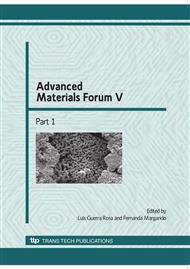p.1355
p.1365
p.1371
p.1377
p.1383
p.1389
p.1397
p.1404
p.1410
Characterization of the Surface of Activated Carbons Produced from Tire Residues
Abstract:
The surface characterisation of new activated carbons produced from tire residues by activation with carbon dioxide was studied. The activated carbons produced were mainly basic with point of zero charge values above 8.8. The main surface functional groups identified by FTIR were ether, quinones, lactones, ketones, hydroxyls (free and phenol) and pyrones. The XRD analysis shows that the materials produced have a microstructural organisation with microcrystallite height around 1.5nm and width from 3 to 5.3nm. This analysis indicates also the possible presence of oxides (single or mixture) of the following heteroatoms: Fe, Al, Ca, Mg, Ti, Si, K, Pb, Cd, Ba, Zn and Sn. The results have shown the significant potential of this type of residues for activated carbon production. Furthermore, the environment friendly use of an industrial residue is also noteworthy.
Info:
Periodical:
Pages:
1383-1388
Citation:
Online since:
January 2010
Price:
Сopyright:
© 2010 Trans Tech Publications Ltd. All Rights Reserved
Share:
Citation:


